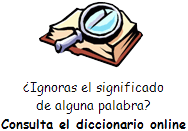Greenpeace: Plastic, Chemical
Pollution Widespread in Antarctica
The non-governmental environmental group Greenpeace reports that plastic
and chemical pollution is often found in snow and seawater collected by
researchers in Antarctica.
Greenpeace said its scientists gathered water and snow samples from
Antarctica during a visit between January to March of this year.
Laboratory tests confirmed the effect of humanity on the continent.
“It was about one microplastic piece at least per liter. When you think
of extrapolating that out to the scale or the Antarctic Ocean, it’s
really, really significant,” said Greenpeace’s Louisa Casson.
She noted that, in the past, scientists thought the currents around the
Antarctic Ocean might protect it from plastic pollution found in much of
the world’s oceans. But now, she said, evidence is increasingly showing
that there might be little, if any, protection.
Microplastics are extremely small particles of plastic. They come from
the breakdown of bottles and other plastic waste in the world’s oceans.
In addition to microplastics, the Greenpeace study also confirmed the
presence of chemicals known as per- and polyfluorinated alkylated
substances. These chemicals are widely used in industrial processes, and
have been linked to reproductive and developmental problems for wildlife.
“This just strengthens the rationale for why we need to be taking action
on land to stop that flow of plastic into the ocean, but also creating
huge ocean sanctuaries at sea to allow wildlife to recover from these
pressures,” Casson said.
The United Nations estimates that 8 million tons of plastic are dropped
into the oceans every year. Plastic has been shown to harm wildlife.
An example of this happened several days ago in southern Thailand. That
was when a pilot whale died after swallowing 80 pieces of plastic waste.
Tests showed the waste weighed about eight kilograms.
International concern about plastic pollution is rising. In India, Prime
Minister Narendra Modi recently promised to ban all single-use plastic
by 2022. In the city of Mumbai, Bollywood movie stars have been taking
part in waste clean-up activities at Versova beach.
Actress Abigail Pande told reporters she was surprised at the amount of
waste she found.
“I am having fun (cleaning this place). But it is also very sad because
once I came here, I got to know that the amount of waste is so high that
if you dig the ground four feet, you will still find plastic inside. And
it will take years to properly clean the beach,” Pande said.
Plastic has now been found in every corner of the world’s oceans, from
the bottom of the Pacific Mariana Trench to Antarctica.
In October, world governments will decide on a European Union proposal
to create an Antarctic Ocean sanctuary. At 1.8 million square
kilometers, the sanctuary would be the largest protected area on Earth. |
![]() ).
Utiliza el botón derecho del ratón y "guardar enlace" para descargar el
fichero a tu PC, tablet, Smartphone, etc.
).
Utiliza el botón derecho del ratón y "guardar enlace" para descargar el
fichero a tu PC, tablet, Smartphone, etc.![]() Escucha el audio
Escucha el audio



